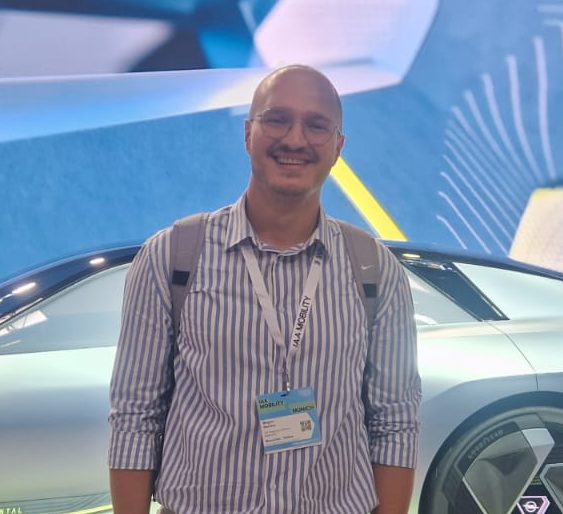Introduction
The field of 3D reconstruction and rendering has seen rapid advancements with the emergence of Neural Radiance Fields (NeRFs) and the more recent Gaussian Splatting technique. Both approaches offer groundbreaking ways to capture and visualize complex real-world environments, but they differ in methodology, efficiency, and application.
In this article, we will compare NeRFs and Gaussian Splatting, exploring their strengths, weaknesses, and potential use cases to determine which approach is best suited for real-time graphics, virtual reality (VR), gaming, and digital twin applications.
What Are NeRFs?
How NeRFs Work
Neural Radiance Fields (NeRFs) are AI-driven 3D reconstruction models that use neural networks to predict the color and density of light in a scene. Instead of working with point clouds or mesh-based geometry, NeRFs represent a 3D space as a continuous volumetric field.
NeRFs take 5D inputs:
✔ 3D spatial coordinates (x, y, z)
✔ 2D viewing direction (θ, φ)
Using this input, NeRFs calculate how light interacts with objects in the scene, producing highly realistic, photo-accurate 3D views. This method allows for dynamic lighting effects, accurate reflections, and intricate details, making NeRFs particularly useful for cinematic-quality renderings, photorealistic VR, and complex scene reconstructions.
Advantages of NeRFs
✔ Unparalleled photorealism – Handles reflections, shadows, and transparency exceptionally well.
✔ Volumetric representation – No need for traditional meshes or point clouds.
✔ Can reconstruct highly detailed environments from just a few images.
Challenges of NeRFs
❌ High computational cost – Requires significant processing power for training.
❌ Slow inference speed – Rendering can be computationally expensive.
❌ Not inherently real-time – Requires optimizations for interactive applications.
What Is Gaussian Splatting?
How Gaussian Splatting Works
Gaussian Splatting is a more recent technique that has gained attention for its efficiency and real-time capabilities in 3D rendering. Unlike NeRFs, which rely on neural networks to predict volumetric data, Gaussian Splatting uses 2D Gaussian functions mapped onto a 3D space to approximate surfaces with extremely high speed and minimal computation.
Gaussian Splatting relies on point-based representations, where each point is defined by:
✔ A 3D position (x, y, z)
✔ A Gaussian function to determine its influence in space
✔ Color and opacity values
By rendering millions of overlapping Gaussian splats, the technique efficiently reconstructs 3D objects and scenes with exceptional speed and quality.
Advantages of Gaussian Splatting
✔ Real-time rendering – Can achieve interactive frame rates, making it ideal for gaming and VR.
✔ Lower computational cost – Requires significantly less processing power than NeRFs.
✔ Smooth integration with existing 3D pipelines – Works well with point cloud data.
Challenges of Gaussian Splatting
❌ Lower visual fidelity compared to NeRFs – May not capture lighting effects as accurately.
❌ Less suited for dynamic lighting scenarios – Struggles with realistic reflections and transparency.
❌ May require high-density point clouds for optimal quality.
Comparison: NeRFs vs. Gaussian Splatting
| Feature | NeRFs | Gaussian Splatting |
|---|---|---|
| Rendering Speed | Slow, requires heavy computation | Extremely fast, near real-time |
| Visual Fidelity | High, with advanced lighting and shadows | Good, but struggles with complex lighting effects |
| Data Representation | Volumetric field using neural networks | Point-based representation using Gaussians |
| Computational Cost | High (requires neural network training) | Lower (efficient point-based approach) |
| Real-Time Performance | Not inherently real-time (requires optimizations) | Designed for real-time applications |
| Best Use Cases | Photorealistic rendering, VFX, digital twins | Real-time visualization, VR, gaming, fast scene reconstruction |
Which One Is Better?
The answer depends on the application:
- If real-time performance is crucial (e.g., VR, gaming, interactive 3D applications), Gaussian Splatting is the better choice due to its efficiency and speed.
- If photorealism and lighting accuracy are the priority (e.g., VFX, digital twins, high-fidelity scene reconstruction), then NeRFs offer superior quality despite their computational demands.
Both methods complement each other in the evolving field of 3D reconstruction and will likely coexist in different use cases, shaping the future of virtual environments, digital content, and real-time 3D rendering.
🚀 The future of 3D is here—whether it’s NeRFs or Gaussian Splatting, both are pushing the boundaries of what’s possible in digital realism.

